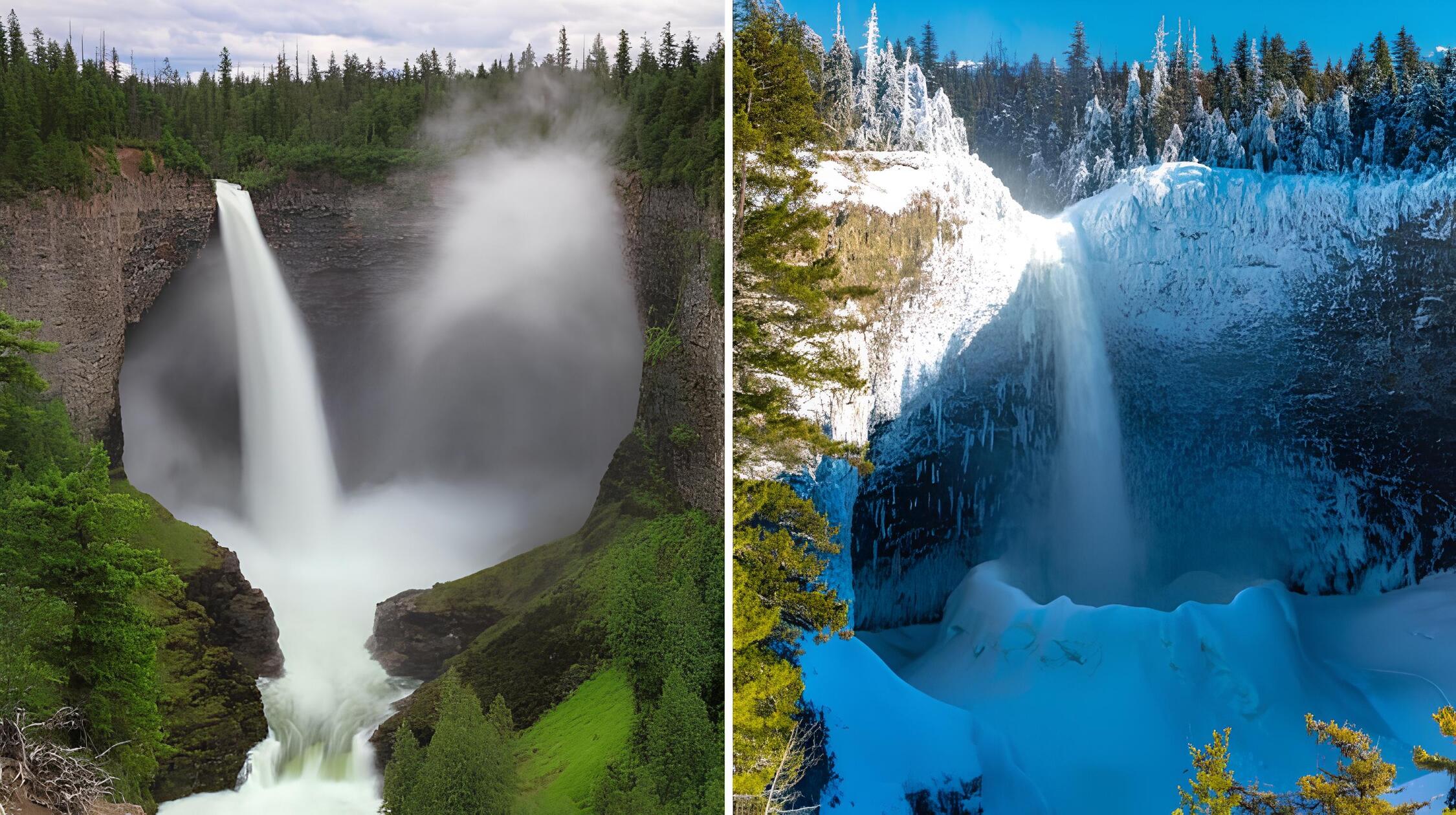Helmcken Falls, a natural marvel in British Columbia, Canada, offers a unique spectacle during winter—a gigantic ice cone at its base. Towering at 463 feet, it is Canada’s fourth-highest waterfall and a major attraction in Wells Gray Provincial Park. Named after John Sebastian Helmcken, a physician and politician from British Columbia, the waterfall is a testament to nature’s grandeur.
During winter, the waterfall’s powerful spray freezes, forming an ice cone that can reach heights of up to 200 feet. The ideal time to witness this phenomenon is from late January to late February, although caution is advised due to slippery road conditions.
The ice cone typically melts away by March, but remnants can be seen as late as June. Behind the waterfall is a recessed bowl that extends over 150 feet into the cliff and spans over 500 feet in width. This adds to the waterfall’s total height, making it over 500 feet tall.
The waterfall was formed approximately 10,000 years ago during the last ice age. It is a result of the erosion of the volcanic Murtle Plateau, which was covered by a massive lava deposit over 200,000 years ago.
In the mid-20th century, there were plans to build dams along the Clearwater and Murtle Rivers to harness the waterfall’s power. However, these plans were abandoned in 1973 when the area was designated as a protected zone.
Helmcken Falls is not just a natural spectacle; it played a pivotal role in the establishment of Wells Gray Provincial Park and remains its most famous waterfall.














